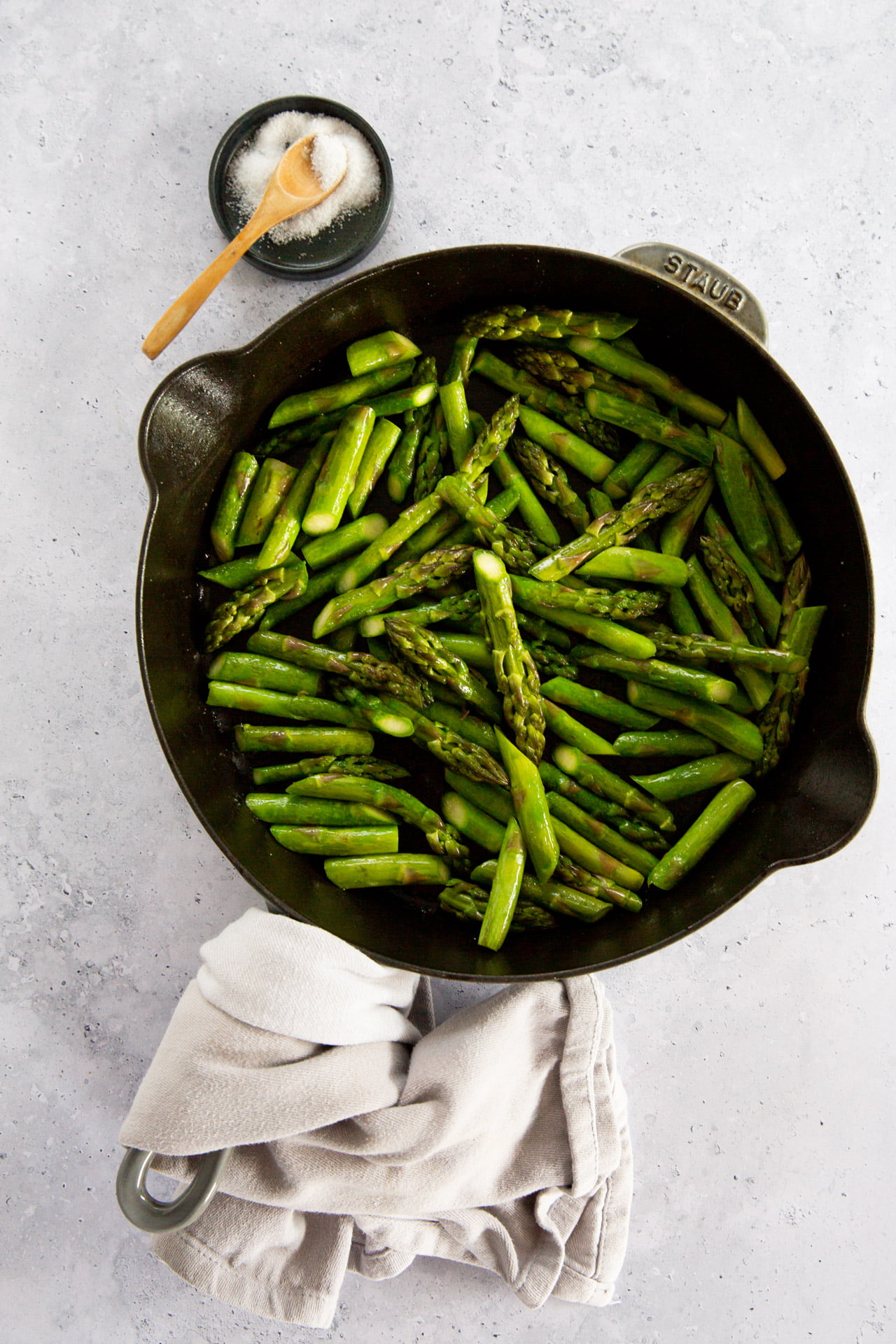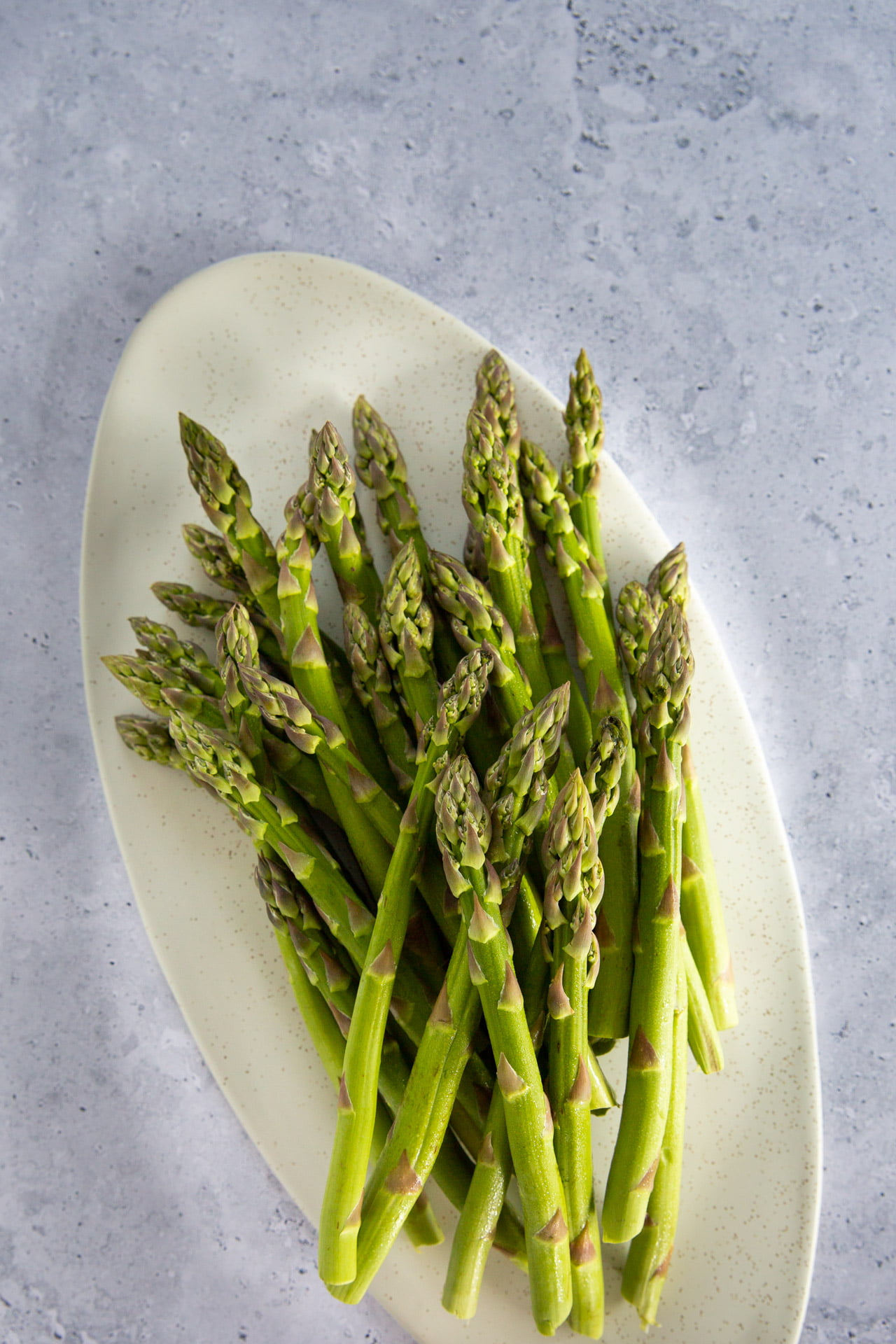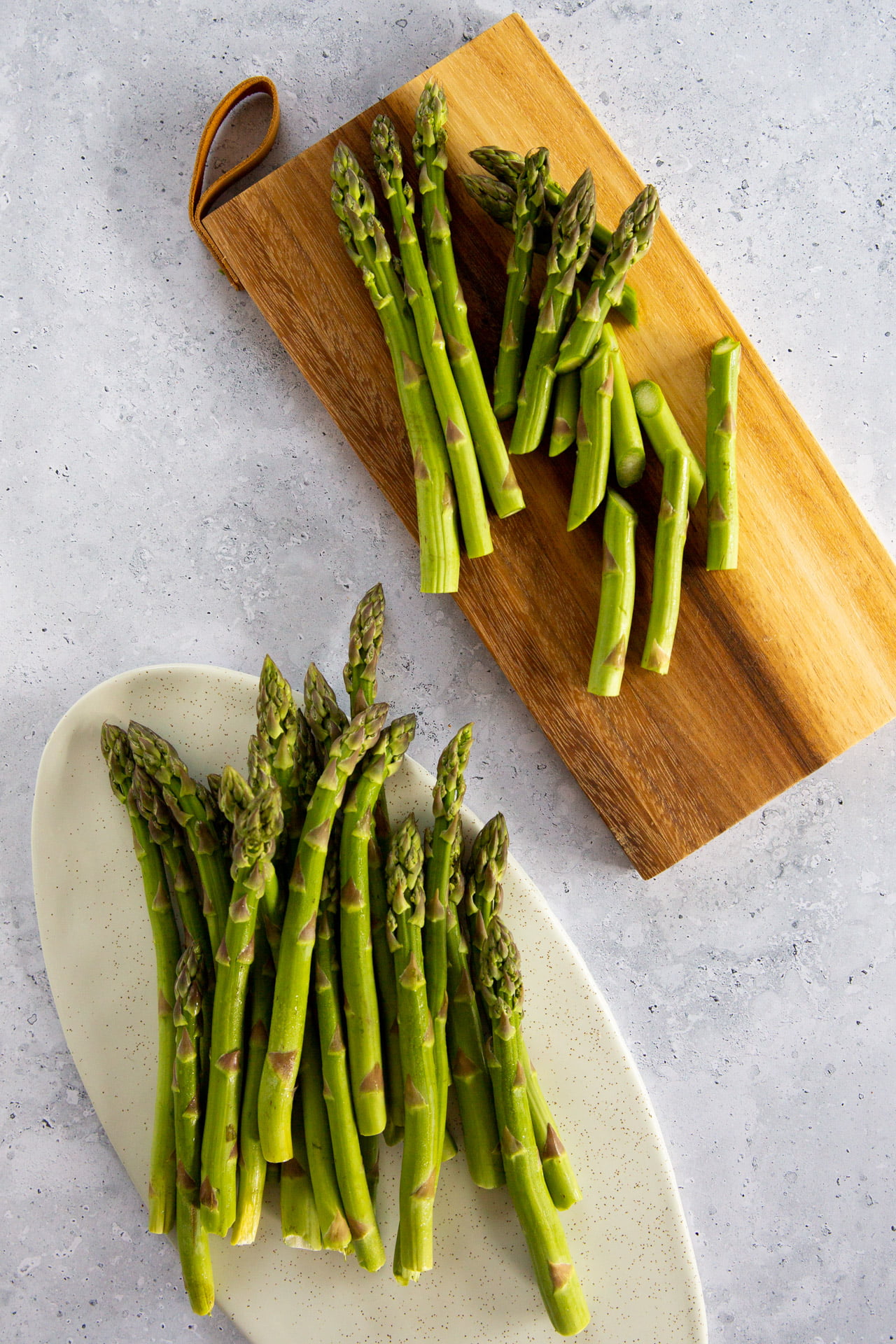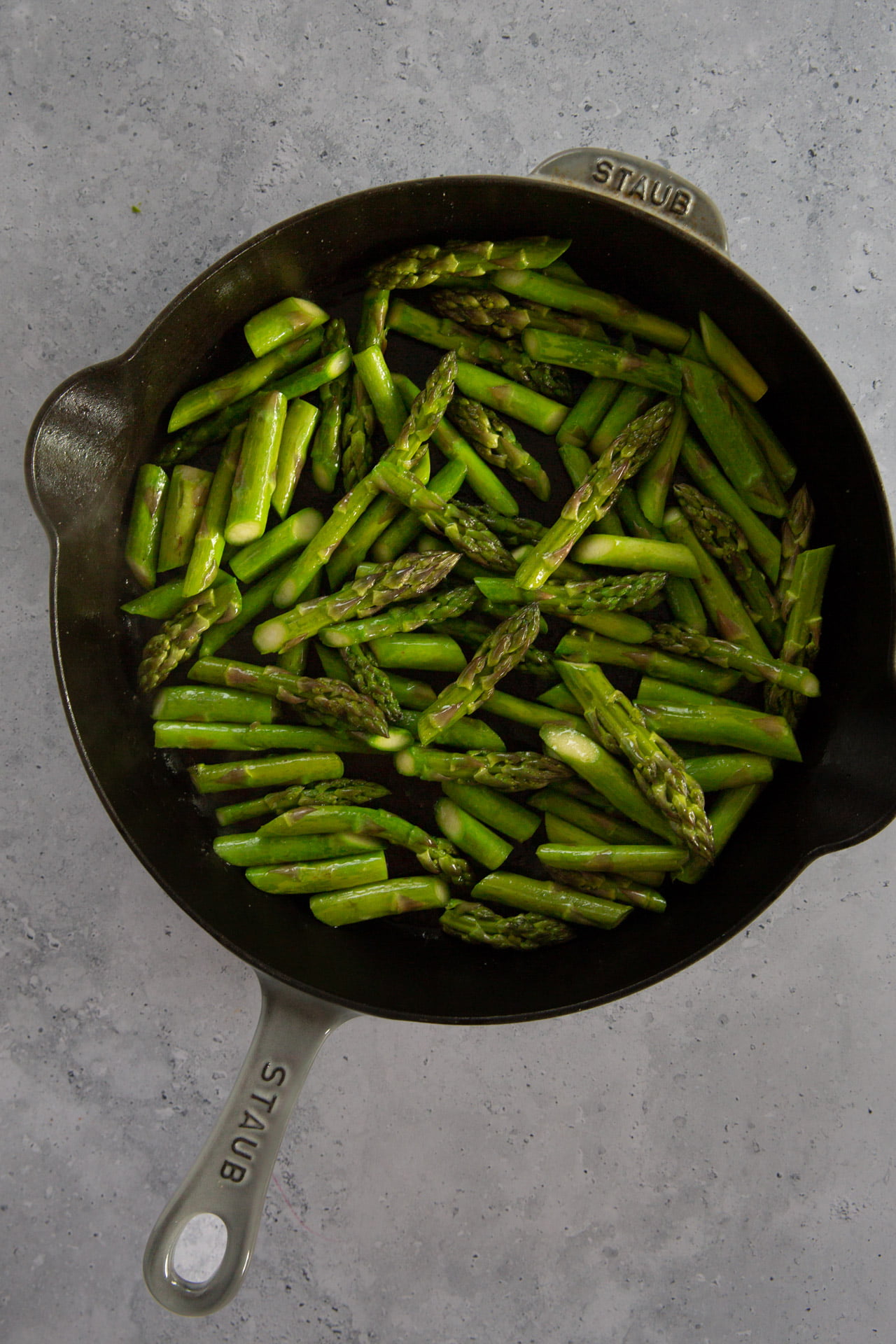
About this recipe
This is the easiest and most delicious way to prepare fresh asparagus. Just a quick sauté in a hot pan, and you’ve got a crisp-tender veggie that works as a light starter, a salad topper, or a vibrant side dish. No fancy techniques, just a method that lets the asparagus shine.
Why you’ll love this recipe
- Customizable. Keep it simple or add lemon, chili flakes, or vegan cheese.
- Quick and easy. Ready in under 10 minutes.
- Healthy. Naturally low in calories, rich in fiber and nutrients.
- Versatile. Serve it with pasta, over toast, next to rice, or as part of a grain bowl.

Ingredient notes
- Salt. Fine sea salt or finishing salt like Maldon for texture.
- Fresh asparagus. Thin or thick—both work! Just adjust the cooking time.
- Olive oil. Use good-quality oil for flavor.

How to make sautéed asparagus
Wash and trim. Rinse under cold water, then trim off the tough ends by snapping or cutting.
Heat the pan. Add olive oil and let it shimmer.
Sauté. Add the asparagus, season with salt, and let them cook until bright green and just starting to brown—about 4-6 minutes depending on thickness.
Variations
- Spicy: Add red pepper flakes or a pinch of chili powder.
- Garlicky: Sauté garlic before adding the asparagus.
- Lemon-pepper: Finish with lemon zest and cracked black pepper.
- Asian-inspired: Add a splash of soy sauce and toasted sesame seeds at the end.

Home cook to home cook tips
- Don’t crowd the pan. Cook in batches if needed so they sauté, not steam.
- Taste as you go. Don’t be afraid to adjust salt, lemon, or spice to your preference.
- Use them fast. Asparagus doesn’t last long—plan to use them within a few days of purchase.
- Meal prep tip: Leftovers are amazing chopped into a salad, pasta, or grain bowl the next day.
Frequently Asked Questions
Easy Sautéed Asparagus
Pan-frying asparagus is one of the simplest and most delicious ways to prepare it. This quick method brings out the natural flavor of the asparagus and gives it that perfect crisp-tender bite.
Equipment
- Cast iron or heavy-bottomed skillet
- Knife
- Cutting board
- Tongs or wooden spoon
Ingredients
- 1 bunch fresh asparagus
- 2 tablespoons olive oil
- Salt and pepper to taste
- Optional Lemon juice, lemon zest, or grated vegan parmesan for garnish
Instructions
Prep the asparagus:
- Rinse under cold water and pat dry thoroughly. Snap or cut off the tough, pale ends of each stalk. You can use your hands to bend and snap, or trim with a knife for even sizes.
Heat the skillet:
- Place a large cast iron or stainless-steel skillet over medium-high heat. Add olive oil and let it shimmer.
Sauté the asparagus:
- Add the asparagus to the pan and toss gently to coat in oil. Let them cook undisturbed for 2–3 minutes to get some browning, then stir occasionally.
Cook to perfection:
- Sauté for 5–10 minutes total, depending on the thickness of the spears. They should be bright green with golden spots and still have a little snap.
Finish and serve:
- Season with salt and pepper. Add a squeeze of lemon juice, a bit of zest, or a sprinkle of cheese if desired. Serve hot.
Notes
Don’t overcrowd the pan: Work in batches if necessary so the asparagus sears, not steams.
Use leftovers: Chop and add to pasta, grain bowls, or scrambled tofu the next day.
Nutrition
Serving: 1servingCalories: 63kcalCarbohydrates: 0.2gProtein: 0.1gFat: 7gSaturated Fat: 1gPolyunsaturated Fat: 1gMonounsaturated Fat: 5gSodium: 0.2mgPotassium: 8mgFiber: 0.1gSugar: 0.1gVitamin A: 30IUVitamin C: 0.2mgCalcium: 1mgIron: 0.1mg
information
Nutritional information of this recipe is only an estimate, the accuracy for any recipe on this site is not guaranteed.
Did you make this recipe?Tag @piloncilloyvainilla on Instagram and hashtag it #alecooks so we can all see your creations.
